

“Some people experience a serious mood change during the winter months, when there is less natural sunlight. This condition is called seasonal affective disorder (SAD). Not everyone with SAD has the same symptoms.”
That quote comes directly from the U.S. National Library of Medicine, which goes to show that this once-disregarded issue is finally being recognized as a real problem. In the U.S., between 1.4 to 9.7 percent of people suffer from it — and the more north you live, the more likely you are to experience it.
Symptoms may resemble mental or creative burnout:
To be clear, there is a huge difference between seasonal depression and clinical depression. This article is only relevant to the former. If you think your depression is more than just seasonal, consult one of these helpful resources to get the aid you need!
But if the depression only sets in during the winter months, then it’s likely seasonal — and in that case, it may be treatable with something as simple as light therapy.
In general, many animals go through a period of reduced activity during the winter months. For humans, this is most likely due to the fact that sunlight regulates our biological clocks, and reduced sunlight availability leads to hormonal changes that affect sleep and mood. That being said, the exact cause of seasonal depression is yet unknown.
Light therapy works off of the “reduced sunlight” hypothesis and attempts to address the issue through artificially-supplied sunlight (or at least something that mimics sunlight). In essence, the theory is that you can “reset” your biological clock by making up for lost sunlight exposure, which should avert those internal changes.
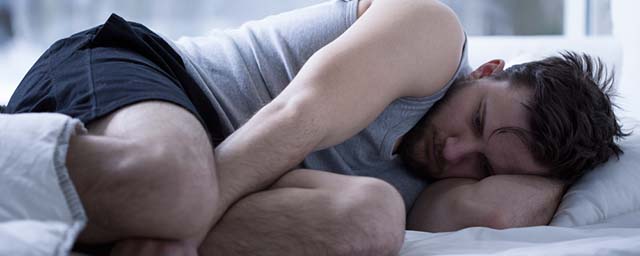
Light therapy is the first-line treatment for seasonal depression, meaning that if you are diagnosed with winter-time affective disorder, then light therapy will be the first attempted treatment. If it works, great! If not, other methods of treatment are available.
Only certain types of light should be used in light therapy. Avoid all forms of full-spectrum light, ultraviolet light, tanning lamps, and heat lamps! We are not medical professionals. When in doubt, always consult your doctor, especially if an issue is self-diagnosed.
Light therapy lamps go by many names: “light therapy devices”, “phototherapy boxes”, and most commonly, “lightboxes”. Many of these devices do the same thing — give off a bright light — but not all light therapy lamps are the same or worth their price.
Some light therapy lamps aren’t meant for seasonal depression. Indeed, light therapy is used to treat several other issues, including some skin problems like psoriasis and eczema — and these lamps tend to emit more ultraviolet light, which can be dangerous. Stick to lamps labelled for seasonal depression.

Whiter and brighter is usually better. The brightness of a lamp is measured in Lux, and the higher the Lux rating, the more light it gives off. Brighter lamps require less exposure time per day, but they may be uncomfortable to use. Also, distance matters — the further away you plan on sitting, the brighter the light should be.
For best results, stay within the 2,500 to 10,000 Lux range. Relatedly, you may find that some lamps give off “blue” light while others give off “white” light. There’s no conclusive evidence that either is more effective than the other, but white tends to be cheaper and is generally considered safer.
LEDs are the most energy-efficient. Light therapy lamps are available in incandescent, fluorescent, and LED varieties. The brightness of light is more important than the type of bulb, so if you can, go with an LED lamp which will consume far less energy than either incandescent or fluorescent.
If you want a light therapy lamp that’s effective, clinically-tested, doctor-recommended, and built to last for years to come, then it’s going to cost you. It might hurt to shell out a few hundreds dollars on a glorified lamp, but this one is worth it.
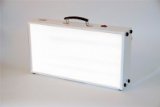 SAD Light Therapy Box - Alaska Northern Lights- North Star 10,000
10,000 Lux at 24"
SAD Light Therapy Box - Alaska Northern Lights- North Star 10,000
10,000 Lux at 24"The Alaska Northern Lights North Star is a light therapy lamp specifically designed to combat seasonal depression. At 24-inches and a Lux rating of 10,000, you’re going to get a lot of light out of this thing — enough that you can sit up to 2-feet away (instead of the more common 1-foot distance).
This lamp has a 60-day money-back guarantee and a lifetime warranty. It uses fluorescent bulbs, emits no harmful ultraviolet rays, and has been on the market for over two decades. Want something tried and true? This is the one.
For an option that’s more affordable than the North Star but still built with quality and efficacy, consider this adjustable lamp from Carex Health Brands.
 Carex Health Brands Day-Light Sky 10,000 LUX Bright Light Therapy Lamp (DL2000)
10,000 LUX of balanced White Light for eye safety
Carex Health Brands Day-Light Sky 10,000 LUX Bright Light Therapy Lamp (DL2000)
10,000 LUX of balanced White Light for eye safetyThe Carex Day-Light Sky Therapy Lamp looks like something you’d find in a doctor’s office, but don’t let that turn you away. It produces a bright fluorescent light rated at either 7,000 or 10,000 Lux and emits virtually no ultraviolet light.
The lamp measures 24 inches in height, but the lightbox itself is only 12 inches. Both the lightbox and the extender arm can swivel to a noticeable degree, which is great when you need to reposition the lamp for whatever reason.
If you’re on a tight budget, we recommend saving up until you can afford one of the two lamps above, but if you really need one right now without spending too much, then here’s the next best thing: the NatureBright SunTouch Plus.
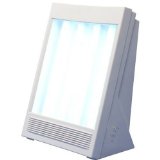 NatureBright SunTouch Plus Light and Ion Therapy Lamp (package may vary)
System includes 10,000-lux light therapy and negative ion therapy
NatureBright SunTouch Plus Light and Ion Therapy Lamp (package may vary)
System includes 10,000-lux light therapy and negative ion therapyThis thing comes with a plastic exterior so it won’t feel as robust as the alternatives above (which both have metal exteriors), but the light itself shines at 10,000 Lux so it’s still effective for light therapy against seasonal depression.
The light-emitting area is about 12 inches, which is large enough for home use, but doesn’t have any swivels or pivots for adjustment, so it might be a bit troublesome when setting it up.
Big, bulky therapy lamps are great if you work from home all day, but if you work in an indoor environment that has you constantly moving from place to place, a stationary lamp isn’t going to do you much good.
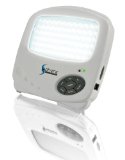 Sphere Gadget Technologies Lightphoria, 10,000 Lux Energy Light Lamp
Portable light system emits 10,000 lux wide-spectrum light
Sphere Gadget Technologies Lightphoria, 10,000 Lux Energy Light Lamp
Portable light system emits 10,000 lux wide-spectrum lightWhich is why you need a portable light therapy lamp, and as far as those go, nothing beats the value of the Sphere Gadget Lightphoria. The device is about 6 inches long but impressively produces light at 10,000 Lux, though it can be adjusted if that’s too bright for you.
The kicker is that it has LED bulbs so it doesn’t use much energy at all, and it also has timer functions for 15, 30, and 45 minutes. No wonder this thing is the #1 best seller in Amazon’s “Light Therapy Products” category.
If you can’t get the Lightphoria for some reason (maybe it’s too expensive) or if you don’t like it (maybe it’s too small), then there’s another portable device that you may want to consider: the Verilux HappyLight Liberty.
 Verilux VT10WW1 HappyLight Liberty Personal, Portable Natural Spectrum Energy Lamp
The Liberty is Verilux's best-selling line of HappyLights. Improve your outlook and energy - naturally and comfortably.
Verilux VT10WW1 HappyLight Liberty Personal, Portable Natural Spectrum Energy Lamp
The Liberty is Verilux's best-selling line of HappyLights. Improve your outlook and energy - naturally and comfortably.At 7 inches, it’s slightly bigger than the Lightphoria, but only produces light at a maximum rating of 5,000 Lux. It’s still effective for light therapy, but you’ll just have to be exposed to it for longer periods of time and have it closer to you — about 8 inches away.
It’s not ideal, but it’s incredibly cheap. You won’t find another light therapy lamp for this price with the same level of effectiveness.
Even though light therapy is a first-line treatment, that doesn’t mean it’s foolproof. If you happen to buy a light therapy lamp and it doesn’t really do anything for you, then you may want to try these other ways to combat seasonal depression.
Furthermore, lack of light and seasonal depression may not even be your issue. You may just be suffering from too much stress, perhaps as a result of working too hard (i.e. workaholism). In that case, you should consider refreshing your morning routine to help alleviate that stress.
Maybe you need to start exercising more. Maybe your computer habits are interfering with your sleep pattern. Or maybe you just need a creative hobby that will make you happier overall. If light therapy doesn’t work for you, these alternatives are worth considering.
Do you suffer from seasonal depression? How are you dealing with it? What has worked and what hasn’t? Got any tips to share? Let us know in the comments!
Image Credits: Woman Light Therapy by Image Point Fr via Shutterstock, Depressed Man in Bed by Photographee.eu via Shutterstock, Woman and Light Therapy by Image Point Fr via Shutterstock




 Top 6 Mobile Video Game Ports for iOS and Android
Top 6 Mobile Video Game Ports for iOS and Android Ratchet & Clank: Into The Nexus Wiki – Everything you need to know about the game .
Ratchet & Clank: Into The Nexus Wiki – Everything you need to know about the game .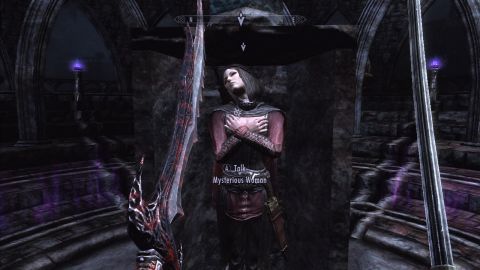 Skyrim Dawnguard DLC Guide: How To Find All The Dragon Shouts
Skyrim Dawnguard DLC Guide: How To Find All The Dragon Shouts Arkham Knight: Combat and Skills Guide
Arkham Knight: Combat and Skills Guide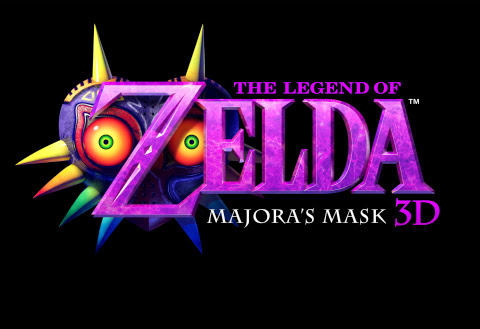 All Heart Pieces - The Legend of Zelda - Majoras Mask 3D
All Heart Pieces - The Legend of Zelda - Majoras Mask 3D